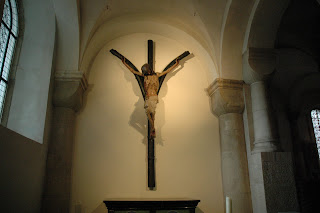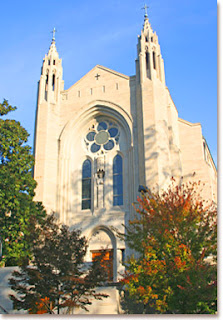The Reformation and Rococo
One of the joys of our trip to Germany this past summer was learning about the evolution of church styles from the Dark Ages to the Reformation. After a two day history lesson in Cologne (which one day I will get back to) we headed to Bavaria. This part of Germany was the front lines during the protestant reformation. Bavaria was strongly Catholic, but was just next door to one of the centers of protestant power (Augsburg).
We were told that we must visit a small church tucked away in an isolated meadow in Bavaria. It was called the Wiess Kirche.
The origins of this church goes back to 1738 when a statue of the "scourged Jesus" was seen to cry during evening prayers. From that time, the small town of Wies became a center for pilgrimage for Catholics from all over Europe. Upon approval by the local ordinary, the chapel was built in 1740.
What we saw when we entered the church as literally "out of this world"
The interior of the chapel exploded with color. It was as if you have entered the heavenly realm. Considered one of the most important examples of Rococo art in the world, it has been placed on the UNESCO list of Cultural Heritage Buildings.
But for Catholics, it is a example of how we have attempted to express our beliefs in the buildings we build. It is also a reaction to the protestant movement towards simplicity and austerity. This church is certainly a bold reaction to that.
We were told that we must visit a small church tucked away in an isolated meadow in Bavaria. It was called the Wiess Kirche.
The origins of this church goes back to 1738 when a statue of the "scourged Jesus" was seen to cry during evening prayers. From that time, the small town of Wies became a center for pilgrimage for Catholics from all over Europe. Upon approval by the local ordinary, the chapel was built in 1740.
What we saw when we entered the church as literally "out of this world"
The interior of the chapel exploded with color. It was as if you have entered the heavenly realm. Considered one of the most important examples of Rococo art in the world, it has been placed on the UNESCO list of Cultural Heritage Buildings.
But for Catholics, it is a example of how we have attempted to express our beliefs in the buildings we build. It is also a reaction to the protestant movement towards simplicity and austerity. This church is certainly a bold reaction to that.





Comments
Post a Comment